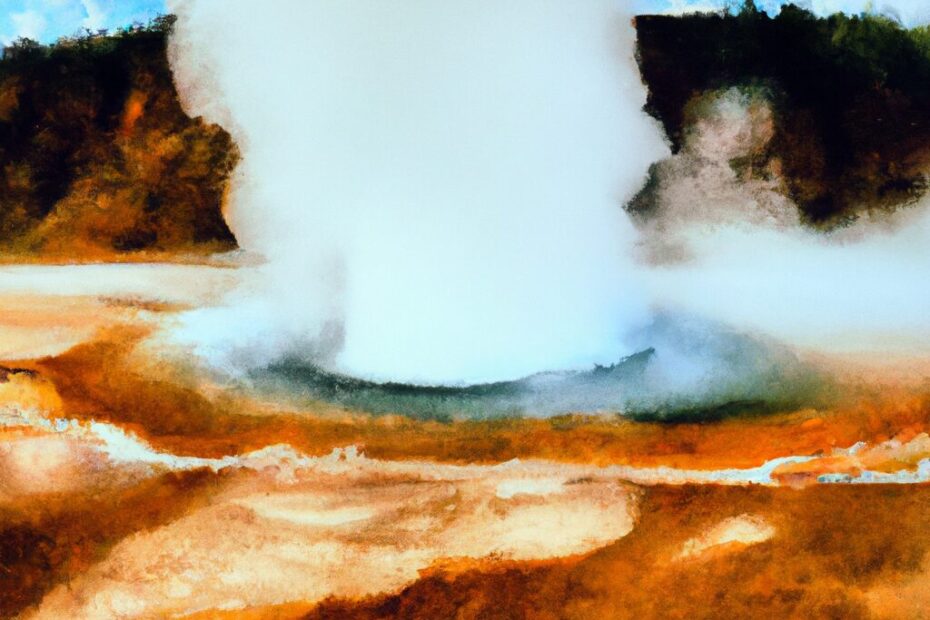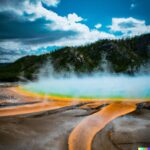Yellowstone National Park is not just a stunning natural wonder, but also a hub of educational resources waiting to be explored. From the park’s rich history to the diverse range of activities available, there is something for everyone to learn and enjoy.
Whether you are interested in hiking, wildlife viewing, or exploring geothermal features, Yellowstone offers a unique experience. In this article, we will delve into the educational resources offered by the park and provide tips on how to plan an enriching trip to this iconic destination.
So, let’s dive in and discover all that Yellowstone National Park has to offer!
What is Yellowstone National Park?
Yellowstone National Park, located primarily in the U.S. state of Wyoming, is a renowned protected area known for its exceptional natural beauty, diverse wildlife, and iconic geothermal features.
Spanning over 2 million acres, Yellowstone National Park is not only the first national park in the world but also a crucial stronghold for nature conservation. The park is home to more than 60 mammal species, including bears, wolves, and bison, making it a hotspot for wildlife enthusiasts and researchers alike. One of the park’s most famous geothermal features, Old Faithful geyser, attracts millions of visitors each year with its predictable and impressive eruptions, showcasing the earth’s raw power and geological wonders.
Why is Yellowstone National Park Important?
Yellowstone National Park holds immense importance in the realms of wildlife preservation, environmental education, and land conservation, making it a crucial stronghold for conservation efforts.
The park’s vast expanse of diverse ecosystems serves as a haven for a wide array of wildlife species, allowing them to thrive in their natural habitats. Yellowstone offers invaluable environmental education opportunities for visitors, highlighting the importance of biodiversity and ecological balance. By safeguarding its land from development, the park ensures that future generations will have the chance to behold its natural beauty and learn from its conservation initiatives, which set a precedent for sustainable environmental practices.
What is the History of Yellowstone National Park?
The history of Yellowstone National Park is deeply entwined with the significance it holds for indigenous cultures, the unparalleled ecological diversity it showcases, the mesmerizing geological wonders it features, and its commitment to long-term environmental sustainability.
The park’s history dates back to its establishment as the first national park in the world in 1872, granting protection to this pristine wilderness. Indigenous tribes, such as the Shoshone, Crow, and Blackfeet have long-standing connections to the land, viewing it as sacred.
Yellowstone’s diverse landscape includes forests, grasslands, geysers, hot springs, and the iconic Yellowstone Lake. The park’s geological features, including the famous Old Faithful geyser and the Grand Canyon of the Yellowstone, attract visitors from around the globe.
Conservation efforts, such as wildlife management and sustainable tourism practices, are integral to preserving this natural treasure for future generations.
What Can You Do at Yellowstone National Park?
Visitors to Yellowstone National Park can engage in a plethora of activities, ranging from thrilling outdoor adventures and wildlife sightings to immersive exploration activities and enlightening educational exhibits.
- Lovers of outdoor activities can go hiking along the park’s extensive trail system, offering stunning views of geysers and waterfalls. Those seeking adventure can enjoy activities such as rafting down the Yellowstone River or camping under the vast starlit skies.
- Wildlife enthusiasts have the chance to spot bears, wolves, bison, and more in their natural habitat. Exploration options include visiting the Grand Canyon of the Yellowstone or taking a scenic drive through Lamar Valley.
- Educational exhibits throughout the park provide valuable insights into the geology, ecology, and history of this remarkable natural treasure.
Hiking and Camping
Hiking and camping in Yellowstone National Park offer unparalleled experiences amidst nature’s wonders, serving as outdoor classrooms where visitors can witness breathtaking geological formations up close.
Immersing oneself in the vast wilderness of Yellowstone provides a unique opportunity to appreciate the Earth’s history through its diverse landscapes and geological marvels.
As you traverse the park’s extensive network of trails, you may encounter fascinating features such as geysers, hot springs, and vibrant hydrothermal pools. These natural wonders not only showcase the park’s unique geology but also serve as reminders of the powerful forces at work beneath the surface.
Camping under the starry night sky further enhances the experience, allowing visitors to connect with the environment on a deeper level.
Wildlife Viewing
Wildlife viewing in Yellowstone National Park provides a glimpse into the rich biodiversity thriving within the park, offering insights into various wildlife habitats and supporting ecological research efforts.
These observations allow visitors to witness the intricate interactions between different species, from the majestic grizzly bears and wolves to the delicate flora and fauna that make up this unique ecosystem. Exploring Yellowstone’s varied landscapes, such as lush meadows, dense forests, and geothermal areas, enhances the understanding of how wildlife adapts to their surroundings. Scientists utilize these wildlife sightings to study population dynamics, behavior patterns, and ecosystem health, contributing valuable data to conservation initiatives and biodiversity assessments.
Geothermal Features
The geothermal features of Yellowstone National Park, including iconic geysers, stand as geological wonders that not only captivate visitors but also contribute to the park’s ecological restoration efforts.
These hydrothermal wonders are not just aesthetically pleasing but also serve as crucial habitats for unique microbial life forms thriving in extreme conditions. The presence of geysers, hot springs, and fumaroles constantly remind us of the Earth’s inner heat, shaping the landscape and fostering biodiversity. The temperature and chemical composition of these features play a significant role in sustaining diverse flora and fauna species within the park, making them vital elements in Yellowstone’s ongoing ecological rejuvenation projects.
Boating and Fishing
Boating and fishing opportunities in Yellowstone National Park allow visitors to engage in serene water activities while supporting the park’s mission of wildlife preservation and habitat conservation.
Exploring the park’s vast waterways provides a unique perspective on the diverse ecosystem, offering glimpses of wildlife like otters, eagles, and various fish species. By immersing oneself in these water-based experiences, individuals not only connect with nature but also contribute to the protection of aquatic habitats. The peaceful rhythm of paddling along the park’s lakes and rivers underscores the importance of conserving these environments for future generations to enjoy.
Yellowstone’s commitment to maintaining healthy aquatic ecosystems is evident in the efforts to sustain habitat balance and protect vulnerable species.”
Winter Activities
Winter activities at Yellowstone National Park offer a magical experience with snow sports, educational trails, and opportunities to enhance environmental awareness in a unique setting.
- Visitors can engage in thrilling activities like cross-country skiing, snowshoeing, and snowmobiling through the stunning winter landscapes of the park.
- The educational trails provide insights into the park’s geothermal features, wildlife conservation efforts, and the importance of preserving natural ecosystems.
- Yellowstone’s winter programs also focus on promoting sustainable practices, highlighting the significance of protecting the environment even during colder seasons.
- This exceptional combination of adventure and eco-consciousness makes winter at Yellowstone a truly unforgettable experience.
What Educational Resources Does Yellowstone National Park Offer?
Yellowstone National Park provides a diverse array of educational resources, including engaging programs that foster environmental stewardship, hands-on learning opportunities, and initiatives supporting conservation efforts.
Visitors to the park can participate in guided tours led by knowledgeable rangers, attend interactive workshops on wildlife conservation, and engage in citizen science projects aimed at preserving the park’s ecosystems.
The park’s commitment to environmental education is evident through its Junior Ranger program, which offers children the chance to learn about nature through fun activities and earn a badge.
Yellowstone’s visitor centers provide exhibits and displays that showcase the park’s geology, wildlife, and conservation efforts, offering a rich learning experience for all ages.
Ranger-led Programs
Ranger-led programs at Yellowstone National Park are tailored to provide in-depth ecological education, offering educational workshops and opportunities for visitors to engage in ecological research alongside knowledgeable park rangers.
These programs not only aim to showcase the natural beauty of the park but also to foster a deep understanding and appreciation for its delicate ecosystem. Park rangers play a crucial role in leading these programs, sharing their expertise and passion for conservation with participants. Visitors have the chance to immerse themselves in hands-on activities such as wildlife monitoring and habitat restoration, gaining valuable insights into the importance of preserving biodiversity. The interactive workshops offer a platform for guests to interact with scientists and contribute to ongoing ecological research efforts within the park.
Junior Ranger Program
The Junior Ranger Program at Yellowstone National Park is designed to engage young participants through educational workshops, fostering a deeper connection to nature and providing valuable educational outreach opportunities.
These workshops offer hands-on activities focused on environmental stewardship, wildlife conservation, and the park’s unique geothermal features. By participating in the program, students not only learn about the importance of preserving natural habitats but also develop a sense of responsibility towards caring for the environment.
The program’s outreach efforts extend beyond the park boundaries, reaching schools and communities to spread awareness about the significance of conservation and sustainability. Through interactive experiences and guided explorations, the Junior Ranger Program ignites a passion for nature in the hearts of its young participants.
Educational Exhibits
Educational exhibits throughout Yellowstone National Park serve as valuable resources for teachers and students alike, offering insights into wildlife education and supporting educational initiatives within the park.
These exhibits are strategically located in key areas of the park to provide visitors with informative displays on the geology, ecology, and history of Yellowstone. They enhance visitors’ understanding of the diverse wildlife present in the park and emphasize the importance of conservation efforts.
Through interactive displays, visitors can learn about the unique behaviors and habitats of Yellowstone’s iconic species, fostering a deeper appreciation for the natural world. These exhibits not only educate visitors but also inspire them to become stewards of the environment, contributing to a more sustainable future.
Online Resources
Yellowstone National Park’s online resources provide accessible educational materials, including informative websites that cater to diverse topics such as environmental science and outdoor learning experiences.
These websites offer a wealth of information on various environmental science topics, including geology, wildlife conservation, and climate change. Virtual visitors can delve into interactive simulations, virtual tours, and educational videos that bring the wonders of Yellowstone to life from the comfort of their homes. By immersing themselves in these online resources, individuals can deepen their understanding of the park’s ecosystems and conservation efforts, fostering a greater appreciation for the natural world and inspiring a commitment to environmental stewardship.
How Can You Plan an Educational Trip to Yellowstone National Park?
Planning an educational trip to Yellowstone National Park involves considerations for maximizing educational opportunities, minimizing environmental impact, engaging in educational outreach, and supporting the park’s conservation initiatives.
One key step in planning such a trip is to research and identify specific educational programs or guided tours offered within the park, ensuring participants have access to in-depth learning experiences tailored to their interests.
It is important to prepare by understanding and practicing Leave No Trace principles to help preserve the park’s natural beauty. Engaging with park rangers and local experts can also enhance the educational aspect of the trip, providing valuable insights into the park’s ecosystems and wildlife. By actively participating in educational outreach activities during the visit, participants can contribute to raising awareness about the park’s conservation needs and sustainable practices.
Choosing the Right Time to Visit
Selecting the optimal time to visit Yellowstone National Park is crucial for maximizing educational outreach opportunities, supporting conservation efforts, and potentially participating in student workshops available during specific periods.
Whether you are intrigued by the geothermal wonders of the park or drawn to its diverse wildlife, planning your visit around student workshops can enhance your understanding and appreciation of the natural world.
During certain seasons, workshops focused on topics like sustainable tourism and wildlife preservation are offered, allowing visitors to actively engage in hands-on learning experiences and contribute directly to Yellowstone’s ongoing conservation initiatives.
By aligning your visit with these specialized workshops, you can immerse yourself in the park’s educational environment while also making a meaningful impact on its future.
Making Reservations
Making reservations in advance for Yellowstone National Park is advisable, especially during peak seasons, to ensure access to educational exhibits, navigate potential environmental challenges, and secure spots in educational workshops.
By securing your reservation ahead of time, you can enjoy a seamless visit to the park without worrying about long queues or unavailable slots. During peak seasons, the demand for entry tickets and workshop participation increases significantly, making it essential to plan your trip well in advance. Accessing the educational exhibits allows you to deepen your understanding of the park’s unique ecosystem and history, enriching your overall experience. Being prepared for environmental challenges such as varying weather conditions or high altitude hikes becomes easier when you have a confirmed reservation and know what to expect.
Packing Appropriate Gear
Packing appropriate gear for a trip to Yellowstone National Park is essential to fully engage with outdoor classrooms, explore educational trails, and make the most of the varied learning opportunities available in the park.
- Such gear includes sturdy hiking boots for navigating the diverse terrain,
- Binoculars for wildlife observation,
- A weather-resistant backpack for carrying essentials, and
- Layers of clothing to adapt to changing weather conditions.
By equipping oneself with the right gear, visitors can enhance their experiences by comfortably immersing themselves in the natural surroundings, capturing memorable moments, and actively participating in educational programs facilitated throughout the park.
Following Park Rules and Safety Guidelines
Adhering to park rules and safety guidelines at Yellowstone National Park is paramount for ensuring a safe and enriching outdoor learning experience while actively supporting the park’s conservation initiatives.
By respecting these regulations, visitors not only safeguard their own well-being but also contribute to the preservation of the park’s delicate ecosystem. Following designated trails, refraining from off-trail activities, and properly disposing of waste all play a crucial role in maintaining the natural beauty of Yellowstone. It is through these collective efforts that visitors become stewards of the land, helping to protect the diverse wildlife and pristine landscapes that make Yellowstone a unique and cherished destination.
Last Updated on February 11, 2024 by Jon Waraas – Originally Posted: February 11, 2024

I’m Jon Waraas, and I’ve been navigating the online world since 2006. By day, I’m the proud owner of some eCommerce gems, and by night, I’m the voice behind the adventures on Waraas.Com.
My heart, however, belongs to the wild beauty of Yellowstone National Park. I’ve got a collection of websites dedicated to sharing the wonders of this natural masterpiece. Oh, and did I mention? I’m currently building my own cabin inside the ghost town of Gilmore, Idaho – a cabin with tales to tell!
When I’m not immersed in the digital realm, you’ll find me lacing up my boots for a good hike or setting up camp under the star-studded sky.




